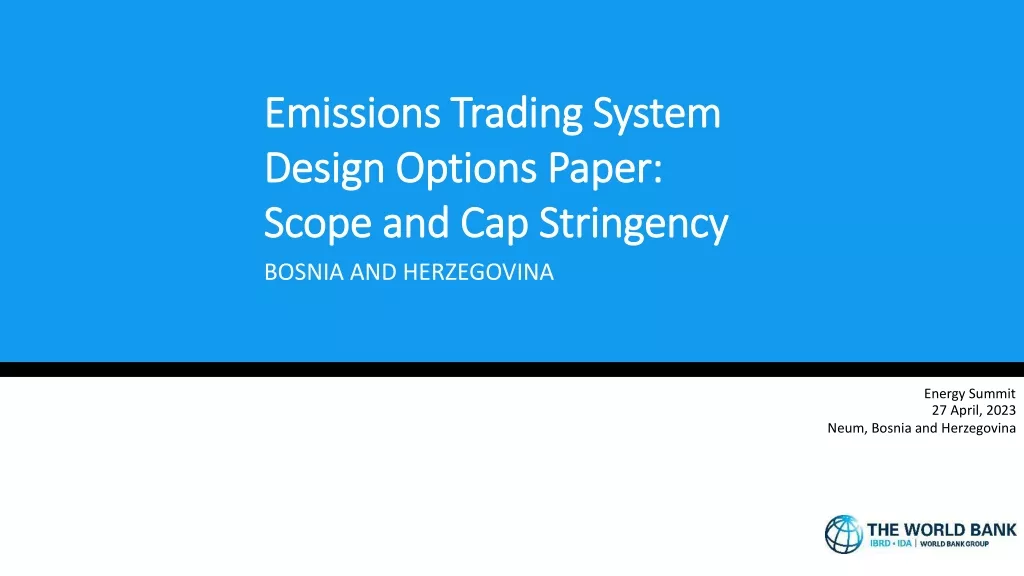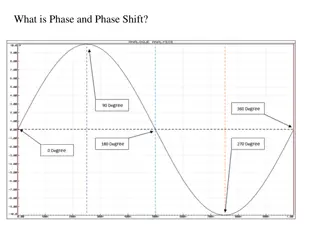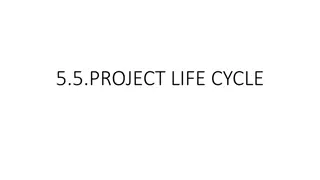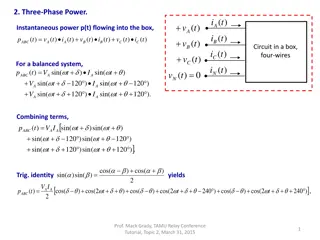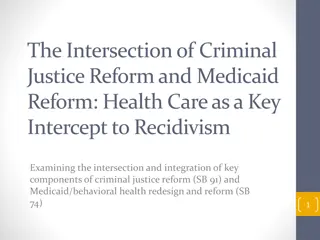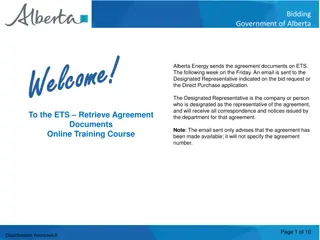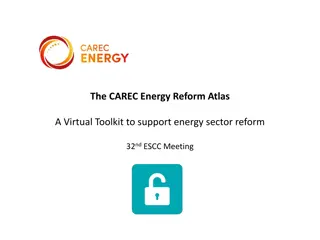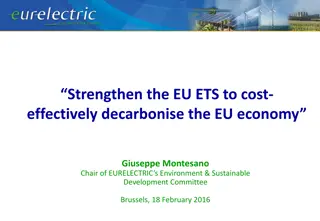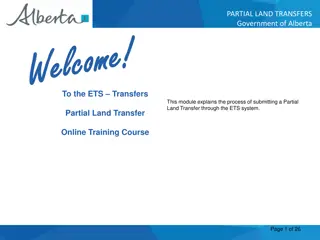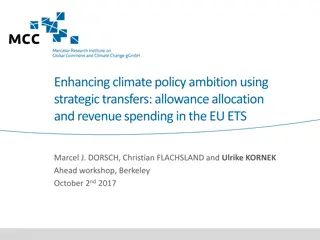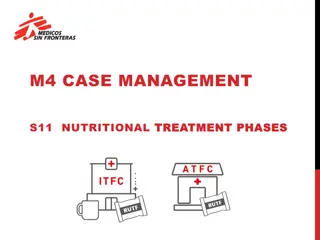Overview of EU ETS in the 2020s: Phase 4 Reform and Policy Implications
The presentation discusses the current state of the EU ETS, focusing on the reform measures for Phase 4 starting in 2021. It covers compliance with emission targets, structural reforms like the Market Stability Reserve, and preliminary data showing emissions reductions. The analysis highlights challenges in decarbonization due to persisting surpluses and low prices, particularly in the power sector.
Download Presentation

Please find below an Image/Link to download the presentation.
The content on the website is provided AS IS for your information and personal use only. It may not be sold, licensed, or shared on other websites without obtaining consent from the author.If you encounter any issues during the download, it is possible that the publisher has removed the file from their server.
You are allowed to download the files provided on this website for personal or commercial use, subject to the condition that they are used lawfully. All files are the property of their respective owners.
The content on the website is provided AS IS for your information and personal use only. It may not be sold, licensed, or shared on other websites without obtaining consent from the author.
E N D
Presentation Transcript
The EU ETS in the 2020s - Status of Phase 4 reform and overlap with other policies Presentation to British Institute of Energy Economics Climate and Energy Seminar 08 February 2017
EU ETS state of play EU ETS state of play Compliance with targets (cap & trade), but consistently low prices Phase 1 2005-2007 Phase 2 2008-2012 Phase 3 2013-2020 Structural reform backloading as temporary measure, then the MSR as the permanent fix to surplus Latest chapter Phase 4 of the ETS starting in 2021 EC proposal released Jul15 Ordinary legislative procedure (co-decision) EP Committee (ENVI) vote Dec16 EP Plenary vote Feb17 Trilogues Mar-May17? Council decision Jun17? 1
Market Stability Reserve Market Stability Reserve the one structural reform the one structural reform To start in 2019 reduces auctioning volumes in a given year by 12% of surplus from previous year Min 100 Mt annual withdrawal so effectively withdraws when surplus above 833Mt (100/0.12) Lower surplus limit of 400Mt below which allowances begin to return Fixed return rate of 100Mt annually 2
Preliminary data shows emissions in 2016 down 49Mt Preliminary data shows emissions in 2016 down 49Mt compared to LRF of 38Mt compared to LRF of 38Mt - - structural surplus above 3Bt for the first time 3Bt for the first time structural surplus above Emissions have been consistently below the cap Structural surplus in ETS 2800 4000 2600 3000 2400 MtCO2e 2200 MtCO2e -24% 2000 2000 -16% 1800 1000 1600 1400 0 1200 2008 2009 2010 2011 2012 2013 2014 2015 2016 Unallocated Backloading Cumulative surplus available to market 2008 2009 2010 2011 2012 2013 2014 2015 2016 Cap with Offsets Historic Emissions 3
Reductions to date due to power sector policies Reductions to date due to power sector policies no incentive for economy wide decarbonization due to incentive for economy wide decarbonization due to persistent surplus and low price persistent surplus and low price no Annual Change in Emissions 0.0% -0.1% -1.0% -2.0% -3.0% -2.7% -4.0% -4.5% -5.0% -6.0% -7.0% -8.0% -9.0% Power Non-power Total EUETS 2011 2012 2013 2014 2015 2016 4
Price history Price history alternatively driven by regulatory changes alternatively driven by regulatory changes and other commodity markets rather than system supply & and other commodity markets rather than system supply & demand demand 35.00 Recession leads to fall in emissions, market realizes surplus will last COM Energy Efficiency Proposal 30.00 25.00 Commodity markets fall led by oil Initial rejection of backloading by EP Plenary 20.00 15.00 10.00 5.00 0.00 5
Emissions continue to be below the cap during the rest Emissions continue to be below the cap during the rest of Phase 3 of Phase 3 4500 Cumulative surplus in circulation Cap Historic Emissions Cumulative MSR Backloading effect + offsets Base emissions forecast 4000 3500 Stationary installations, Mt 3000 2500 2000 1500 1000 500 0 2008 2009 2010 2011 2012 2013 2014 2015 2016 2017 2018 2019 2020 -500 6
so the total surplus will be 3.8 so the total surplus will be 3.8- -4.4 billion tonnes by 2020 2020 4.4 billion tonnes by 4500 4000 3500 2,121 3000 2,087 2500 2000 1500 2,299 1000 1,759 500 0 Base Emissions Low Emissions Surplus available to market MSR 7
With current EC proposals annual surpluses will be With current EC proposals annual surpluses will be generated until late in Phase 4 and possibly generated until late in Phase 4 and possibly throughout throughout 2000 1800 1600 Stationary installations, Mt 1400 1200 1000 800 600 400 200 0 2023 2027 2021 2022 2024 2025 2026 2028 2029 2030 Cap Low Emissions Base Case Emissions Sandbag estimates of renewables generation & power demand to 2020 Base emissions scenario then EU Reference Scenario for the period 2021-2030 8
Emissions in Phase 4 are likely to be below the cumulative Emissions in Phase 4 are likely to be below the cumulative cap (without the existing surplus) even if the EUETS itself cap (without the existing surplus) even if the EUETS itself leads to little abatement leads to little abatement 18,000 15,504 15,300 16,000 14,000 12,573 12,000 Mt CO2e 10,000 8,000 6,000 4,000 2,000 0 Cap Base emissions Low emissions We consider it unlikely that emissions will be above our base case 9
By 2030 the MSR will contain 3 By 2030 the MSR will contain 3- -5 billion tonnes with some surplus still available to market some surplus still available to market 5 billion tonnes with 8000 7000 6000 5000 Mt CO2e 5,107 4000 3000 3,620 2000 2,244 1000 430 0 Base Emissions Low Emissions Surplus available to market MSR Consequences of large MSR are to destabilize the market by creating uncertainty about what will happen to such large volumes total is a quarter to half of cumulative Phase 4 cap At current rates of release, all MSR volumes would only return to market around 2070 10
Doubling MSR deduction rate for four years has little Doubling MSR deduction rate for four years has little effect by 2030 because the surplus persists through effect by 2030 because the surplus persists through Phase 4 Phase 4 Increasing the rate at which allowances are placed in the MSR does not change the fundamental supply-demand balance by the end of the period 5000 4500 4000 3500 3000 MTCO2e 2500 2000 1500 1000 500 0 2019 2020 2021 2022 2023 2024 2025 2026 2027 2028 2029 2030 Base Surplus Base MSR Double MSR Surplus Double MSR Price effect may increase surplus slightly by lowering demand, but this effect is likely small 11
Cancellation of 800Mt from MSR becomes relevant in Cancellation of 800Mt from MSR becomes relevant in 2050s 2050s Cancellation will not have an impact because the MSR will contain 3.7 5.4Bt by 2030 and it only returns 100Mt/yr. Effect will be felt in 30 years MSR volumes in 2030 by decade of return 4,000 3,620 Mt Total 3,500 Cancellation of 800Mt 2060s 620 3,000 Mt CO2e 2050s 1000 2,500 2,000 2040s 1000 1,500 1,000 2030s 1000 500 0 12
Increasing the LRF to 2.4% has only a minor impact on the Increasing the LRF to 2.4% has only a minor impact on the market before 2030 market before 2030 The cumulative surplus in 2030 is reduced by 242Mt during Phase 4 (3-5% of cumulative surplus in 2020, 1.6% of cumulative cap for Phase 4). In 2030, the cap difference is 44Mt. 2000 1500 MtCO2e 1000 3% (44Mt) difference in 2030 500 0 2021 2022 2023 2024 2025 2026 2027 2028 2029 2030 2.2% cap 2.4% cap Assuming the same rates, the cumulative cap difference is over 2Bt by 2050 13
Emissions in Phase 4 are likely to be below the cumulative Emissions in Phase 4 are likely to be below the cumulative cap (without the existing surplus) even if the EUETS itself cap (without the existing surplus) even if the EUETS itself leads to little abatement leads to little abatement 8000 7000 800 242 6000 5000 Mt CO2e 4541 4000 800 39Mt due to MSR rate change 234Mt due to MSR rate change 242 3000 2000 2781 1000 1768 227 0 Base Emissions Scenario Low Emissions Surplus available to market LRF increase from 2.2% to 2.4% MSR MSR Cancelled We consider it unlikely that emissions will be above our base case 14
Rebasing the cap has immediate impact from 2021, Rebasing the cap has immediate impact from 2021, because it addresses the surplus at source because it addresses the surplus at source A surplus is no longer being generated in Phase 4 and the existing surplus will immediately start decreasing 2000 4500 1800 4000 1600 Stationary installations, Mt 3500 1400 3000 1200 2500 1000 2000 800 1500 600 1000 400 500 200 0 0 2019 2020 2021 2022 2023 2024 2025 2026 2027 2028 2029 2030 Cumulative surplus Cumulative MSR Cap Emissions Forecast *Forecast 2020 emissions used as the new cap starting point Increasing the LRF in addition to rebasing further increases stringency. 15
Because rebasing aligns to actual emissions it is robust Because rebasing aligns to actual emissions it is robust to different outcomes over the remainder of Phase 3 to different outcomes over the remainder of Phase 3 If emissions fall faster or slower than anticipated to 2020, rebasing would still ensure that the surplus does not continue to grow throughout Phase 4 2000 5000 1800 4500 1600 4000 Stationary installations, Mt 1400 3500 1200 3000 1000 2500 800 2000 600 1500 400 1000 200 500 0 0 2019 2020 2021 2022 2023 2024 2025 2026 2027 2028 2029 2030 Cumulative surplus Cumulative MSR Cap Emissions Forecast *Forecast 2020 emissions used as the new cap starting point In the highly unlikely case of emissions above the cap in 2020 the existing cap would be an upper limit. 16
Price impact is moderate. Even with rebasing prices, Price impact is moderate. Even with rebasing prices, reach the expected Ph 3 level of 30/t only around reach the expected Ph 3 level of 30/t only around 2030. 2030. 40 35 30 25 20 15 10 5 0 2008 2009 2011 2013 2014 2015 2016 2018 2019 2020 2021 2023 2025 2026 2027 2028 2030 2010 2012 2017 2022 2024 2029 Historical Price SB Higher MSR Rate Rrice SB Rebasing Price TR Base Price ICIS Base ICIS LRF SB Base Price SB 2.4% LRF Price SB Low Emissions Price TR MSR Price ICIS MSR Note: Price scenarios are indicative only, based on analysis of the supply demand balance and abatement cost assumptions. They are for the purposes of comparing reform options only. 17
Weak ETS is likely to lead to more overlapping Weak ETS is likely to lead to more overlapping action, but this may still reduce cumulative emissions action, but this may still reduce cumulative emissions A weak ETS, with prices too low to stimulate necessary investment, is likely to lead to more actions by Member States (or the EU) concerned about appropriate long term trajectories The traditional view is that such overlapping policies do not decrease cumulative emissions, which are fixed by the cap However the surplus means that this view is unlikely to hold in practice Additional actions increase the surplus The majority of this is absorbed into the MSR This is likely to lead to reduced emissions over time, either because further volumes are cancelled from the MSR, or because they enable tighter caps (especially as they would take several decades to return) These factors apply to some extent even without a surplus 18
Conclusions Conclusions Emissions expected to continue declining ETS design not robust enough to avoid another decade of irrelevant prices Proposal includes sensible small steps to fix system, but unlikely to restore scarcity before end of 2020s More policy overlap likely as prices stay depressed until surplus is removed while MS try to comply with long term trajectory 19
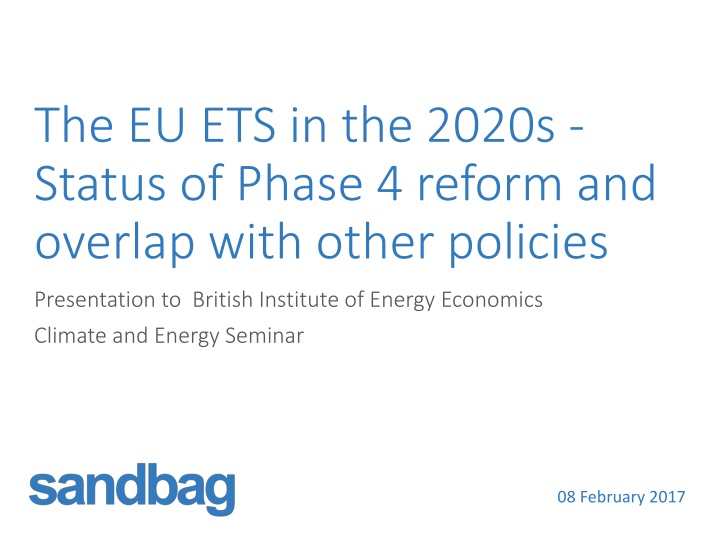


![❤[PDF]⚡ Escaping from Eden: Does Genesis Teach that the Human Race was Created](/thumb/21697/pdf-escaping-from-eden-does-genesis-teach-that-the-human-race-was-created.jpg)
